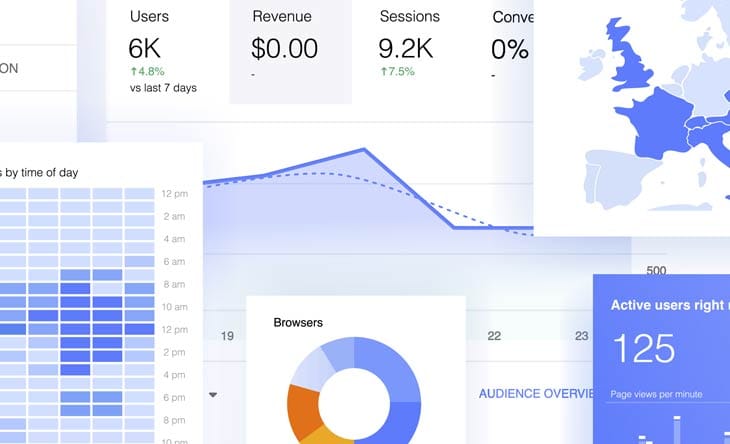Tips for a good Google Ads campaign Google Ads, formerly known as Google AdWords, is an effective platform for online advertising . A well-designed campaign can attract new customers, increase website traffic, and improve brand awareness. However, the effectiveness of such a campaign depends heavily on its implementation.
so using this platform properly is of utmost importance.
Tip 1: Careful keyword research
The role of careful keyword research in designing a Google Ads campaign cannot be overestimated. After all, these keywords are the starting point for creating and delivering ads to users. Thorough keyword research can identify relevant search terms that potential customers are likely to use to find products or services that match the offering of the company being advertised.
There are various tools for conducting effective keyword research, such as the Google Keyword Planner Tool.
A specialized Google Ads agency is often hired to identify the appropriate keywords and ensure a balance between reach and relevance. It is also important to take negative keywords into account, which ensure that ads are not displayed for search queries that do not match the advertised offer.

Tip 2: Optimize ad texts
In addition to the right keywords, the ad text is also an important factor for the success of a Google Ads campaign. This text is the first thing a user sees when the ad is delivered. It is therefore important that the ad text is appealing and meaningful.
A good ad copy should be clear and precise and offer the user significant added value. It should be clear what the company is offering and why the user should consider this offer. A strong call to action at the end of the ad copy can help motivate the user to interact with the ad.

Tip 3: Continuous monitoring and optimization
Ongoing monitoring and optimizing a Google Ads campaign is critical to its long-term success. The campaign’s performance should be reviewed regularly to determine which aspects are working well and which areas need improvement.
Key metrics to monitor include click-through rate (CTR), average cost per click (CPC), number of conversions, and cost per conversion.
Changes in these metrics may indicate problems or opportunities that should be addressed.
It’s a good idea to test different versions of ads and landing pages to see which ones work best. This process, also known as A/B testing , can help you continually improve campaign performance.
Tip 4: Targeted Targeting
Targeting is another crucial factor for the success of a Google Ads campaign. Google Ads offers various options to more precisely determine the target audience of the ads. These include geographic targeting, demographic targeting, device targeting and interest targeting.
Geographic targeting allows ads to be delivered in specific geographic areas, while demographic targeting allows ads to be delivered based on characteristics such as age and gender. Device targeting targets users who use certain types of devices, and interest targeting allows ads to be delivered to users who have certain interests or consume certain types of content online .

Tip 5: Use of Ad Extensions
Ad extensions are a useful tool that adds additional information to the main ad and increases its visibility. They can also help increase click-through rates and improve the overall performance of the ad.
There are several different types of ad extensions, including sitelinks, call extensions, location extensions, and more. These extensions can help make the ad more relevant and useful to users by providing additional options for interaction.
Tip 6: Use of remarketing
Remarketing is a powerful strategy that shouldn’t be overlooked within a Google Ads campaign. This technique allows businesses to re-reach users who have already interacted with their website or app. This allows for targeted ads to those users to encourage them to return to the site and potentially achieve a conversion.
Google Ads offers several remarketing options, including standard remarketing, dynamic remarketing, and search ad remarketing lists.
Standard remarketing shows ads to users who have previously visited the website.
Dynamic remarketing takes this a step further by presenting ads that show products or services the user has viewed on the website. This strategy can help improve the overall performance of a Google Ads campaign by helping to reactivate previous visitors and encourage them to take valuable actions. It’s important to follow the Google Ads remarketing guidelines to ensure an optimal strategy.

Tip 7: Performance measurement and analysis
Measuring progress and analyzing data is essential to the success of any Google Ads campaign. Using analytics tools like Google Analytics can provide valuable insight into ad performance and user behavior. Measurable metrics like clicks, impressions, click-through rate (CTR), average cost per click (CPC), conversion rate, and return on investment (ROI) can provide insightful information. This data helps understand which aspects of the campaign are working and which need optimization.
In addition to measuring performance, it is also important to analyze the user path after the ad is clicked. Information such as time spent on the landing page, bounce rate, and the user’s path through the website can provide valuable insights to improve the user experience and ultimately the effectiveness of the ads. Data-driven analysis enables ongoing improvement in campaign performance and helps maximize ROI. This is an ongoing process and requires regular reviews and adjustments to ensure the Google Ads campaign remains effective and supports business goals.
Overall, a successful Google Ads campaign requires careful planning, constant monitoring and ongoing optimization. By following these tips, the efficiency and effectiveness of the campaigns can be significantly improved. Tips for a good Google Ads campaign Tips for a good Google Ads campaign Tips for a good Google Ads campaign Tips for a good Google Ads campaign Tips for a good Google Ads campaign Tips for a good Google Ads campaign Tips for a good Google Ads campaign Tips for a good Google Ads campaign
